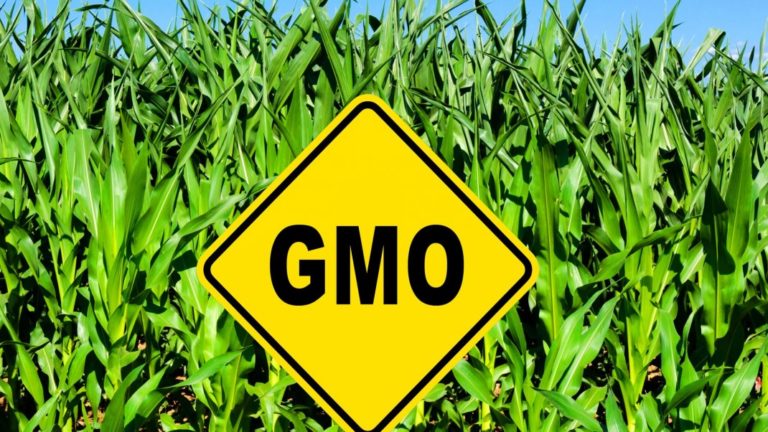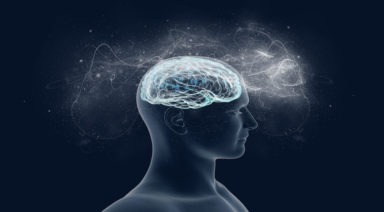Are GMOS Detrimental to Health & Reproduction?

How much do you know about the food you consume?
Sure, you might be an avid reader of food labels or an all-organic shopper. You may prioritize buying meats with no antibiotics or may not even eat meat at all. Perhaps you opt for the farmers’ market over your local grocery store.
However, an internal element of your food is harder to track: GMOs, or genetically modified organisms. What are they, exactly, and what do they mean for your health and wellness?
Simply put, GMOs are “altered with DNA from another organism, be it a bacterium, plant, virus or animal,” as Live Science explains. This ability allows geneticists to breed genetically modified foods, often resulting in a higher yield and production, such as tomatoes that are resistant to frost, potatoes that are more difficult to bruise, etc.
While the potential benefits from GMOs seem promising, there are still plenty of risks and unknown factors that warrant consideration when planning your eating habits.
Let’s take a look at a few of them to help you make the best decision possible when buying your food.
Seed Monopoly – Who Controls the GMOs
You may already know, when it comes to control over the seed supply, there are a couple of big players, one of which is Monsanto, which controls 80 percent of the GM corn market, and 93 percent of the GM soy market.
Couple that with the fact that behemoth companies such as Monsanto enjoy high levels of freedom when it comes to their activities, and it is certainly reason for concern.
As researchers on the topic report, 94 percent of our seed varieties have disappeared over the last century, leaving the remains to a handful of global corporations such as Monsanto, which is also known for its stringent control over farmers’ abilities to save seeds produced after harvest for re-planting as well as lawsuits against farmers whose non-Monsanto seeds are contaminated by the company’s GMOs.
Some even speculate that, while there is a de facto worldwide moratorium on terminator technology, or “seeds are genetically engineered to make them sterile and unusable for replanting,” companies like Monsanto may already be trying to make them a reality, further tethering a farmer’s ability to grow crops to their patronage of the company.
This wide-reaching control of the available seeds means it is already difficult, and likely to become harder for consumers to avoid purchasing GM products.
Is GMO Food Safe? Potential Health Risks
The monopolization of the seed industry through GMOs is not only a worldwide economic concern, but also a health one.
Due in part to their relatively recent inception, as well as a lack of substantial independent testing, much is not known about the possible side effects of long-term consumption of genetically modified foods.
Among the possible health effects some worry are connected to genetically modified foods are digestive issues, endocrine disruption, and possibly even gene altering.
The rise of instances of gluten intolerance and other similar digestive disorders have some pointing to GMOs as a possible environmental cause of the shift. While wheat is not a GMO, other GM crops have been engineered to withstand the weed killer called Roundup, whose active ingredient is glyphosate.
Analysis of related research suggests such components of GMOs may exacerbate or initiate gluten-related disorders, perhaps most specifically intestinal permeability, or “leaky gut.” This could be attributed to the hole-punching toxin used in GM corn, which kills insects by poking holes in their stomachs.
However, digestive issues aren’t the only possible impact of GMOs on the body. There may also be cause for concern when it comes to their potential effects on the endocrine system.
The rise in GM glyphosate-tolerant crops has caused concern among scientists, who call for a closer look at the direct effects of glyphosate-based herbicides (GBHs) to determine “whether the effects of GBHs are due to endocrine disrupting activities.”
This further investigation is especially crucial, given that endocrine disruption can account for increased obesity, liver disease, fertility issues, prostate cancer, and thyroid diseases among other issues.
Some studies even call into question whether GMOs could affect human DNA. One such study published by the Public Library of Science posits that complete genes may pass from food to human blood.
While concrete proof of the direct link between GMOs and some health effects has not surfaced, major organizations such as the American Cancer Society caution that “the lack of proof of harm is not the same as proof of safety,” and endorse the continued assessment of GMOs to be sure of their genuine safety.
What Can You Do?
When it comes to GMOs in your life, it really comes down to education. Depending on the political decisions of the state or country you live in, there may be differing rules and regulations regarding whether or not GMOs must be labeled.
While there continues to be plenty of debate about the controversial topic, the fact of the matter is that genetically modified foods are already on the shelves of our supermarkets, and in the foods we eat at restaurants and friends’ houses. Although many have endorsed the continued study and analysis of the long-term effects of GMOs on humans, its availability has outpaced the policy around it.
Resources about the issue are also choppy and somewhat lacking. That means the burden of research and decision-making falls into your hands. Find out more about the effects of GMOs to make an informed decision about whether or not you will consume them.
Luckily, there are some places out there than can help you to recognize and avoid GMOs by learning which products most commonly include GMOs and how to keep a look out for them. In addition, eating locally farmed food, shopping at local co-ops and grocery stores, and looking out for non-GMO verified products on store shelves are all great ways to limit your intake of GMO foods.
The Actual Truth About Fluoride

Fluoride is added to 70% of America’s drinking water, in what has long been a controversial practice of involuntary mass medication. The CDC lists fluoridation as one of the top 10 most important public health measures of the 20th century. But a group of non-profit organizations is now fighting the EPA on this practice, citing a mountain of evidence that shows little benefit, and massive risks.
Not only has the ingestion of fluoride been linked to a variety of health concerns, but research increasingly shows that it doesn’t even improve our teeth. While applying fluoride directly to the tooth’s enamel can perhaps prevent tooth decay, it has been proven in dozens of peer-reviewed studies that swallowing the substance has no health benefit whatsoever.
So why exactly do we fluoridate our water?
The origin of the practice is downright bizarre: In 1901, dentist Frederick McKay began a 30-year study of what was known as “The Colorado Brown Stain.” Residents of Colorado Springs showed a unique disfiguration of their teeth: brown, mottled pits appeared in this population with alarming consistency. Yet, as McKay would soon discover, there was a beneficial trade-off for this unsightly condition: Those afflicted by the “Brown Stain” showed a complete lack of tooth decay and cavities.
After an analysis of the local water supplies, McKay found an unusually high amount of fluoride, which he credited for both the lack of decay and the “Brown Stain.” Today, the “Brown Stain” is known as dental fluorosis, and mild cases (which only produce white streaks) are present in 58% of adolescents. This mild discoloration has been a known side effect of fluoridation since the beginning, but the benefit of cavity and decay reduction was thought to outweigh the risk.
In the last few decades, however, an abundance of medical research has emerged that shows much more profound potential dangers, leading to an ongoing legal battle to end this practice. Fluoride is essentially toxic to the human body, although in small doses, no acute effects are perceived. While our kidneys are able to filter out 50-60% of the fluoride we consume, the rest is stored in the body and has been observed to build up over time in certain areas.
One organ that is particularly susceptible to fluoride build-up is the pineal gland — the part of our brain responsible for regulating sleep and reproductive hormones. Sometimes known as “the third eye,” this small gland has been linked to metaphysical abilities by many cultures throughout history. Philosopher and scientist René Descartes believed the pineal gland to be the “principal seat of the soul.”
It is estimated that 40% of Americans have significant amounts of fluoride build-up in this gland by age 17. By old age, the pineal gland contains about the same amount of fluoride as a tooth. While the role of the pineal gland in facilitating psychic abilities and increased intuition is still up for debate, the fact that fluoride consumption impacts the gland’s ability to function is absolutely proven.
And that’s not the only part of the brain that suffers: over 30 independent studies have linked fluoride to a reduction in childhood IQ: A 2018 study published in Occupational & Environmental Medicine found that, for every increase of 1 milligram per liter of fluoride in a pregnant women’s urine, their offspring averaged 2.4 points lower IQ scores at age 1-3 years old. This follows a 2017 study funded by the National Institutes of Health (NIH) showing in utero fluoride levels associated with lower IQ in 6-12 year-olds.
Animal studies have shown other neurological effects, including impaired memory, reduced ability to learn, and even mild forms of brain damage. With potential health risks like that, you would think that the evidence of fluoride’s benefits must be pretty solid. …..well, think again.
There is no solid proof that drinking fluoride actually improves dental health.
In a 1989 study, data collected by the National Institute of Dental Research found that children who live in areas where the water supplies are fluoridated have tooth decay rates nearly identical to those who live in non-fluoridated areas. While tooth decay has declined in the US since fluoridation was introduced, countries which do not add fluoride to their water have seen the same rate of decline in tooth decay. This data from the World Health Organization implies that factors other than fluoridated water are contributing to the overall improvement of dental health worldwide.
In fact, there has never been a controlled, randomized trial to demonstrate the effectiveness or safety of fluoridation, despite over 60 years of consumption in public water supplies. A 2009 study, funded by the NIH, was surprisingly the first to look at individual exposure to fluoride (as opposed to simply living in a fluoridated community). They found no correlation whatsoever between fluoride ingestion and tooth decay.
Considering the wealth of scientific evidence now available, the involuntary mass consumption of fluoride seems indefensible. Yet the EPA has dismissed citizen petitions to remove the substance and is now trying to dismiss a lawsuit that would ban the use of fluoride under the Toxic Substances Control Act.
Carbon filtration devices, like those made by Pur or Brita, will not remove fluoride from water. Even expensive reverse-osmosis filters can not remove 100% of the substance, although they can be up to 90% effective. Even if you have your own well or collect rainwater to drink, fluoride is still practically impossible to avoid. Food and drink is often made with fluoridated water. And of course, no explicit labeling is required.
When most people hear the term fluoride, they think of happy, white, shiny teeth. But if more Americans looked at the actual truth about this practice, perhaps the involuntary medication could end.




































